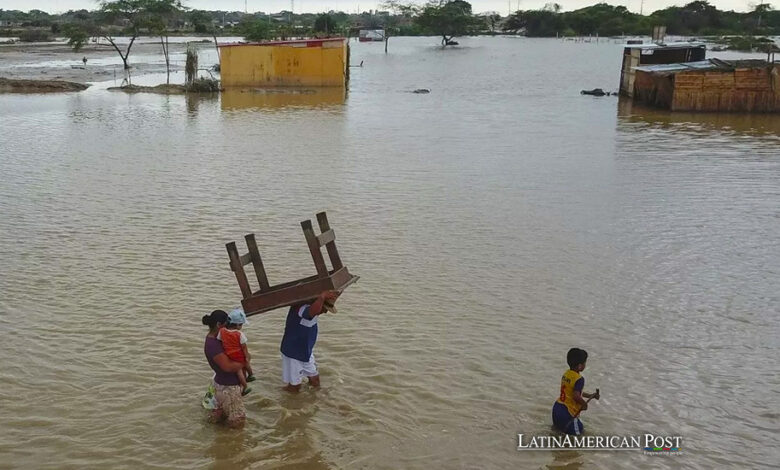Heavy rains begin to cause flooding and overflows in Peru

The intense rains that fall in different regions of Peru have begun to cause havoc in the country, with flooding and overflows in localities in the north and south of Peru. At the same time, authorities prepare to face the imminent impact of the El Niño climate phenomenon.
Floods in Tumbes and river overflowing in Ayacucho
The National Emergency Operations Center (COEN) reported this Wednesday on the social network X (formerly Twitter) that the rains have flooded streets in the northern region of Tumbes, bordering Ecuador.
He explained that rainfall has been recorded in the districts of Papayal, Matapalo, and Tumbes since Tuesday night, and continues to this day.
According to the report from local and regional authorities, “only flooded streets have been reported,” although probable effects are being monitored in the area.
River overflow in La Mar and effects in Yurimaguas
The COEN also reported that heavy rains caused a river to overflow its banks in the district of Santa Rosa, in the Ayacucho province of La Mar, in southern Peru, on Tuesday morning.
This caused damage to homes and the rural road, which interrupted vehicle traffic in an area without alternative routes.
Local media also showed this Wednesday images of flooding in the town of Yurimaguas, in the Amazon region of Loreto, where heavy rain fell for more than 10 hours, causing flooding in streets and homes and power outages.
Red alert in several regions and risk of landslides
The National Service of Meteorology and Hydrology (Senamhi) reported that the rains occur on the coast, mountains, and jungle in the north of the country and that localities in the regions of La Libertad, Áncash, Huánuco, Amazonas, and San Martín “present a red threshold of danger” in the event of the possible activation of streams.
On Tuesday, the National Institute of Civil Defense (Indeci) reported that at least 142 districts on the north coast and in the mountains of the country are at risk of being affected by landslides, huaicos (landslides) and other types of mass movements caused by the rains announced for this week.
These first effects occur while the Government indicates that it will not “spare resources” in prevention tasks to face the consequences of the El Niño phenomenon, which is expected to break out in the coming weeks.
Read also: Green Nobel: Honoring Environmental Heroes of the Amazon
This phenomenon hits, above all, the coast and the northern and central mountains of Peru with heavy rains, floods, avalanches, and landslides, while the southern area generally endures an intense drought.
A budget of 7.2 billion soles to face the crisis
In this regard, the Minister of Economy and Finance, Alex Contreras, said that the Peruvian Government considered it “prudent” to prepare “for the worst scenario” and for that reason, it has approved, so far, a budget of 7,200 million soles (1,945 million dollars or 1,764 million euros). Specialized organizations point out that the rains that will fall during the summer, which began this month and will end next March, may go from “strong” to “moderate” intensity, with the clarification that they will always “be higher than normal amounts.”
